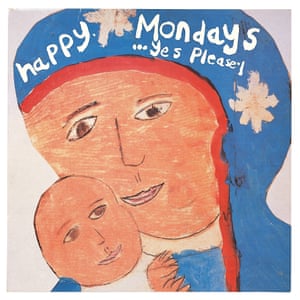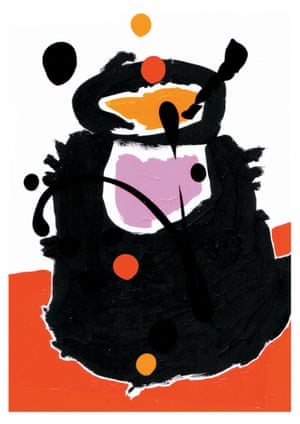Tom and Mary Carroll raised nine children in their modest council house in Little Hulton, Salford. When daughter Maria was born with Down’s syndrome, her siblings would occasionally have to run down to the shops to have a word with local scallywags teasing her. So incensed was Tom by the treatment of kids with Down’s, he wrote to the Manchester Evening News to recount a story of Maria saving Christmas dinner one year by fixing the cooker. “Maria is an amazing young woman,” he wrote, “with unique social skills. Her capacity for loving embraces all her relationships. Seeing Down’s children referred to as ‘cases’ is so sad. Oh that afflicted society valued their gifts.” The letter was printed. Five years after his death, Tom Carroll’s wish may yet be granted.
Maria set up an imaginary class with chairs set around her, smoking a pencil. It was just brilliant
Between the years of 1988 and 1992, the youth of Manchester was ripped to the gills on ecstasy, reframing global youth culture from the dance-floor of nightclubs like Konspiracy and the Thunderdome, dancing to “Strings of Life” in bucket hats more usually sported on Blackpool prom. Two of the Carrolls’ sons, Matt and Pat, made a name for themselves as the unofficial art wing of this riotous, narcotic northern music and nightclub explosion. As Central Station Design, the brothers made artwork for the Happy Mondays, Northside and James, from record sleeves to tour posters. Their studio on Sackville Street, round the corner from Chorlton Street bus station, was just as much a heart of what would come to be dubbed Madchester as the studios of pirate radio station Sunset FM or the serving hatch at Dry Bar. Tony Wilson loved their work so much he once said “the second half of the Factory story is best summed up by the painterly eccentricity of Central Station”.

Every good subculture deserves its hidden tale of rogue talent. Maria Carroll might just be Madchester’s. “Mum and Dad gave their whole life to the care and love of Maria,” says Matt. “I wasn’t born at the time, but my older brothers and sisters told me that when Maria was born, Dad told them: ‘We will be bringing home a very special person today.’” After Maria was born, a nurse told Mary not to have any more children. “I was born a year or so later,” Matt says. “We got through it. Me and Maria shared the same pram as babies. We still share the same space now.”
Art was an important feature of the Carrolls’ family life. A Lowry print hung in a prominent position in the home: “It stirred the imagination of us all.” Tom would take his children along to Salford Art Gallery. “I think they were quietly pleased and proud in some ways,” Matt says of his and Pat’s success, “but they never told us or went on about it. But they gave us the freedom to find our own way in life and they were always totally supportive of whatever we did.”

When Tom and Mary died within three months of each other, five years ago, Matt took over as Maria’s carer. He’d spotted her talent for art when she was young. “When she first started painting she set up an imaginary classroom with all the chairs in the room set round her, smoking a pencil. Just brilliant.” Matt and Pat hung one of Maria’s paintings – flowers daubed on computer printout paper – in the Central Station studio for inspiration. “It was and still is fantastic,” he says. They chose another of Maria’s paintings, of the Madonna and child, to adorn the last Happy Mondays album, Yes, Please. Matt can’t remember whether the band was aware the picture was Maria’s work. He texts Shaun Ryder to check. “He just got back and says, “Yes, we all knew it was Maria’s artwork and were very proud to have it as a cover.’”
Three years ago Matt and Maria began working on pictures together, often starting with an idea Maria had begun on an iPad. “It became obvious that to collaborate and create something together would be special. The project also proved therapeutic, helping Maria and I to come to terms with the death of our parents. Maria was connected at the hip to Mum and Dad. They were everything to her, so their passing was a huge blow.”

This month, the work of Matt and Maria Carroll will be shown at Salford Art Gallery. The pictures are big and bold, colourful and expressive, at once familiar to anyone who owns a Happy Mondays album and new, on account of the bright new touch Maria brings. They are works, Matt says, made entirely on equal terms. “I love Maria so much,” he says. “She’s a much underestimated star.” He can only ruminate on what Tom and Mary would make of their working together. “I think for them this would be the icing on the cake.”
Ups and Downs is at Salford Museum and Art Gallery until 4 June 2017 (salfordcommunityleisure.co.uk)
The unsung Madchester artist
Hiç yorum yok:
Yorum Gönder